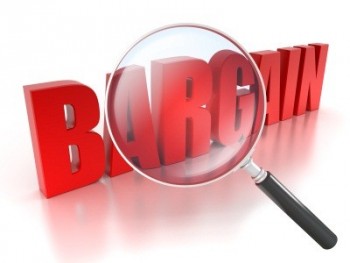
A bargain buy
The best investments are those you can pick up for a bargain, but not because the shares get slammed amid a short-term setback. The very best are those that trade at a discount to intrinsic value for a long time, because nobody notices or cares. CSL Limited (ASX: CSL) is one of those unexciting businesses that even owners of so-called ‘blue-chip’ portfolios only hold occasionally.
As many of you would already know, CSL is one of Montgomery’s top three positions. The company has recently announced the acquisition of the loss-making influenza division of rival Novartis for US$275 million. CSL currently derives just seven per cent of its revenues from bioCSL – the division that will take advantage of the recently refurbed manufacturing facilities it has acquired.
However, CSL believes that the acquisition will “transform” bioCSL from a relatively small Melbourne-based manufacturer to the world’s second largest (behind Sanofi) with access to modern facilities and global scale and reach.
The deal reminds many analysts of the 2004 Aventis Behring acquisition, which occurred when returns from plasma were weak. In 2009, CSL Behring opened the world’s largest and most advanced plasma testing laboratories in Knoxville, Tennessee, and in 2012 the European Organisation for Rare Diseases (EURORDIS) recognised CSL Behring for its pioneering work in developing and manufacturing therapies used to treat rare and serious medical conditions with the 2012 EURORDIS Award.
CSL’s CEO Paul Perreault observed: “This transaction has the potential to create a global platform for bioCSL that is comparable in many aspects to our global protein science business.”
The deal has enormous potential and is de-risked by the relatively low price paid. How do we know the price paid was cheap? Here’s an extract from Novartis’ announcement to its shareholders that suggests the purchase price is lower than even the replacement cost:
October 26, 2014 22:00 CET
Novartis today announced it has entered into a definitive agreement to divest its influenza vaccines business to CSL Limited (CSL) for an agreed price of US$275 million. This transaction requires regulatory approvals and is expected to close in the second half of 2015.Novartis announces divestiture of influenza vaccines business to CSL for US$275 million.
The Novartis influenza vaccines business has a strong track record of delivering almost 1 billion doses of seasonal and pandemic influenza vaccines globally over the last 30 years. The company was the first and only manufacturer with the flexibility of two production technologies – egg-based vaccines for seasonal, pandemic and pre-pandemic, and cell-culture-based vaccines for antibiotic-free production with the potential for rapid scale-up to protect against pandemic threats. The business also benefits from access to a proprietary adjuvant platform and leadership in pandemic preparedness.
Novartis remains fully committed to the influenza business during the transition period to closing, including honouring agreements with customers, research and development for influenza vaccines and product launches.
Related transactions and deal terms
…As a result of today’s announcement, IFRS requires a separate valuation of the influenza vaccines assets. This immediately triggers the recognition of an exceptional impairment charge of approximately US$1.1 billion (pre-tax) as the book value of the influenza vaccines assets are above the selling price.”
In other words, the division was held on the books of Novartis at close to US$1.4 billion, and CSL picked it up for $275 million.
Montgomery holds shares in CSL Limited.
Interesting read, I do however refer to your point regarding blue chip investors distaste with CSL,
“CSL Limited (ASX: CSL) is one of those unexciting businesses that even owners of so-called ‘blue-chip’ portfolios only hold occasionally”
In my experience I find that most ‘blue-chip’ investors like big safe companies due to their big safe dividends (generally fully franked) especially retirees and those who wish to create sizable income streams, surely the fact CSL returns an unfranked dividend at a yield of less than 2% at today’s prices plays a factor in it being omitted from many portfolios.
Hi Roger, is there an explanation why Skaffold’s valuation is much less than one done in following the formulas in your lovely book?
Assumptions. It’s always about the assumptions/inputs used.
I watched CSL hover around $30 for 3 years (2009-2011) and now i cry in my sleep as it hits $70+ if only i had known about Skaffold.
Roger,
CSL is a wonderful company & has performed spectacularly for its shareholders over many years. Can you please explain Skaffold’s intrinsic value for this stock?
Best regards,
Rob
Hi Rob,
You are right and that is what Skaffold reflects. Skaffold shows an A1 business with historical intrinsic value growth of over 25% per annum for a decade, and expected intrinsic value growth of more than 11% in the next few years. Skaffold’s Summary Screen also shows excellent EPS growth, excellent ROE and forecast to continue improving, strong cash flow relative to reported profits, a long term funding surplus, excellent forecast EPS growth (based on analyst expectations) and a relatively confident band of forecasts by those analysts. The only other observation, which you also correctly point out, is that it has not been a bargain.
It does appear to be a bargain, even though it made a loss in 2013 and its success seems to fluctuate with the rate of flu epidemics. Presumably Novartis, despite the claims they make for productivity improvement in their annual report, are not as good as CSL in returning businesses to profit or, at only 3% of their business, fixing the little vaccines business is not worth the trouble. It will be interesting to see how it fares with CSL.
Thanks for the insights Stewart and nice to hear from you.